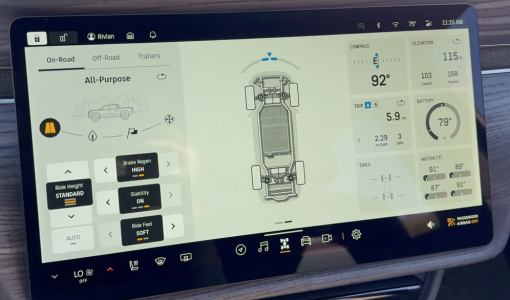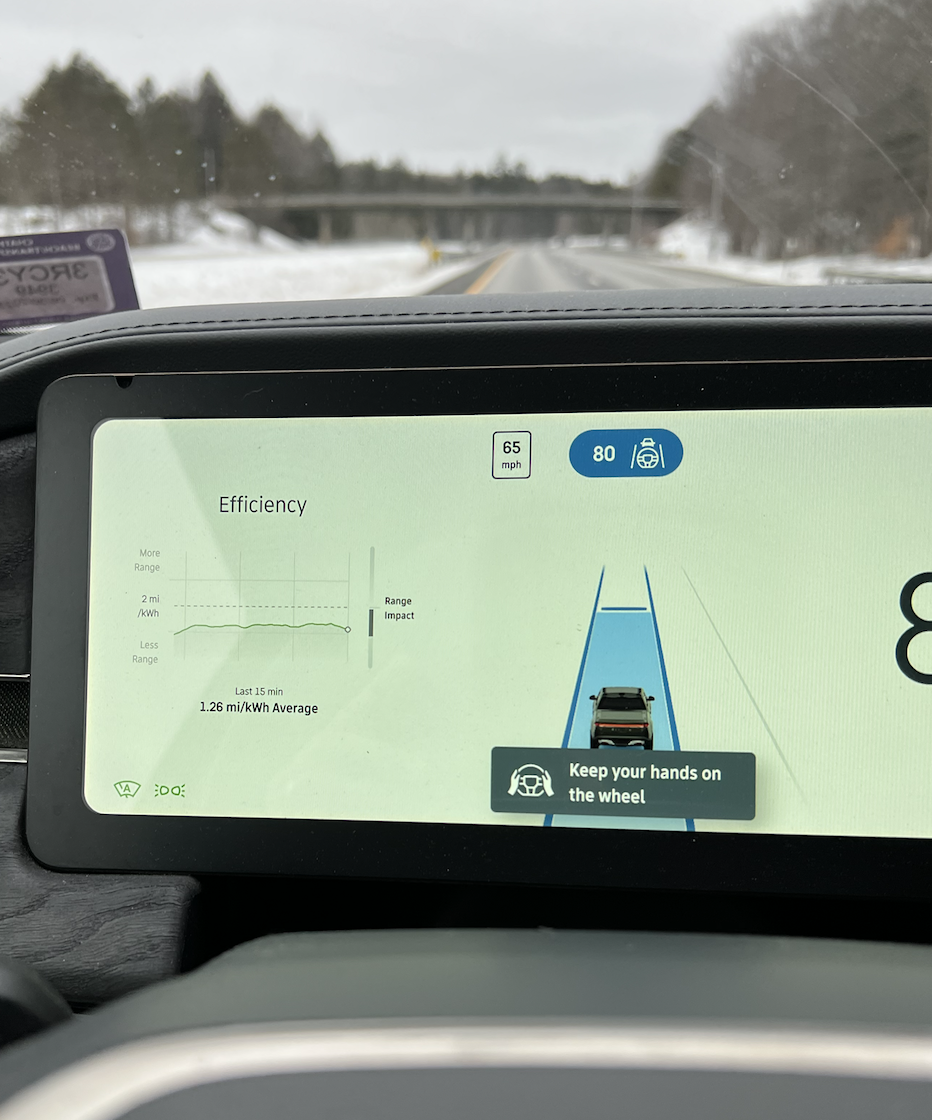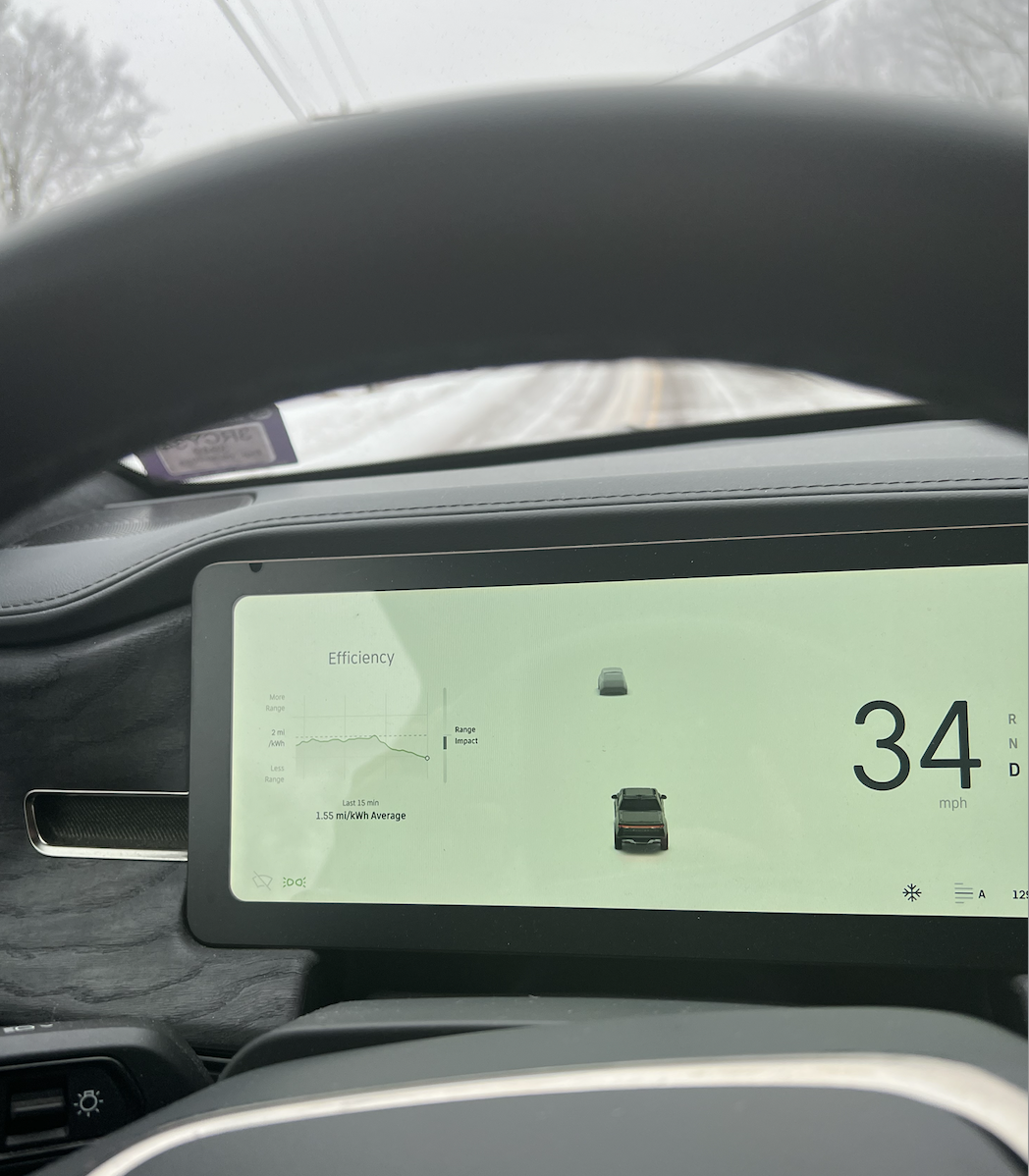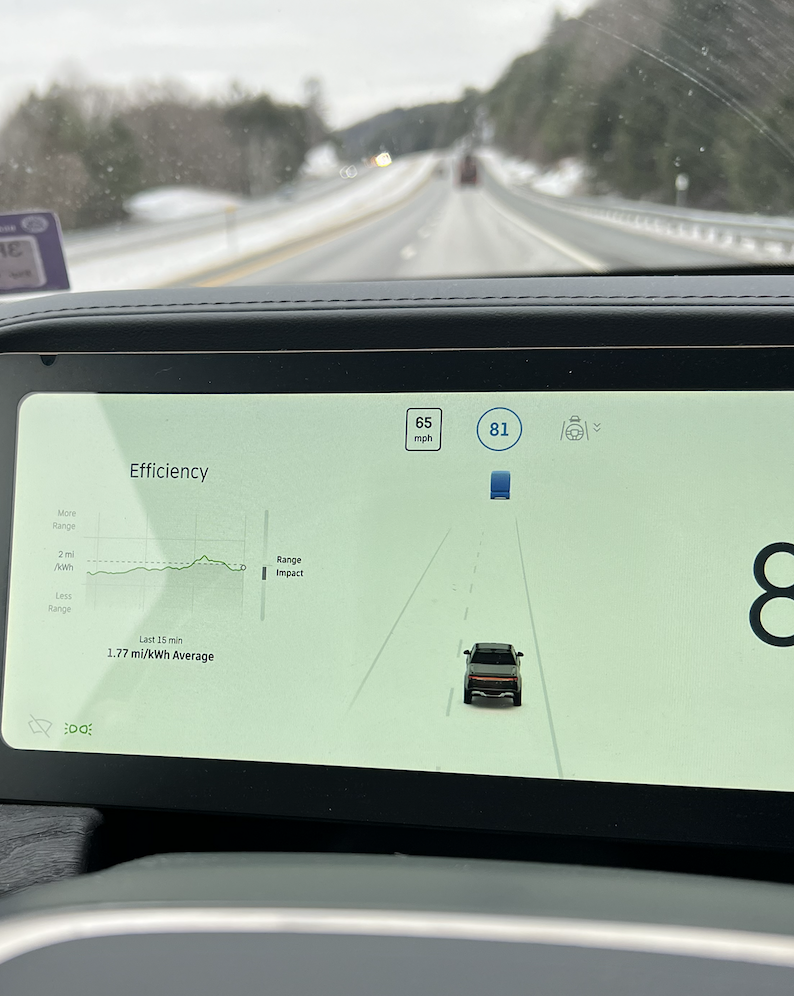I dunno. I think my early impression was always that of a big corporate giant taking business away from the little guy or the more local mom & pop shops with their real estate moves in certain areas. We also never really had many in the Northeast. I also always had the impression that they just sold cheap crap off a container ship!
Is EV demand really tanking?
- Thread starter JohnBills
- Start date
-
 From all of us at Scout Motors, welcome to the Scout Community! We created this community to provide Scout vehicle owners, enthusiasts, and curiosity seekers with a place to engage in discussion, suggestions, stories, and connections. Supportive communities are sometimes hard to find, but we're determined to turn this into one.
From all of us at Scout Motors, welcome to the Scout Community! We created this community to provide Scout vehicle owners, enthusiasts, and curiosity seekers with a place to engage in discussion, suggestions, stories, and connections. Supportive communities are sometimes hard to find, but we're determined to turn this into one.
Additionally, Scout Motors wants to hear your feedback and speak directly to the rabid community of owners as unique as America. We'll use the Scout Community to deliver news and information on events and launch updates directly to the group. Although the start of production is anticipated in 2026, many new developments and milestones will occur in the interim. We plan to share them with you on this site and look for your feedback and suggestions.
How will the Scout Community be run? Think of it this way: this place is your favorite local hangout. We want you to enjoy the atmosphere, talk to people who share similar interests, request and receive advice, and generally have an enjoyable time. The Scout Community should be a highlight of your day. We want you to tell stories, share photos, spread your knowledge, and tell us how Scout can deliver great products and experiences. Along the way, Scout Motors will share our journey to production with you.
Scout is all about respect. We respect our heritage. We respect the land and outdoors. We respect each other. Every person should feel safe, included, and welcomed in the Scout Community. Being kind and courteous to the other forum members is non-negotiable. Friendly debates are welcomed and often produce great outcomes, but we don't want things to get too rowdy. Please take a moment to consider what you post, especially if you think it may insult others. We'll do our best to encourage friendly discourse and to keep the discussions flowing.
So, welcome to the Scout Community! We encourage you to check back regularly as we plan to engage our members, share teasers, and participate in discussions. The world needs Scouts™. Let's get going.
We are Scout Motors.
You are using an out of date browser. It may not display this or other websites correctly.
You should upgrade or use an alternative browser.
You should upgrade or use an alternative browser.
I don’t think it’s tanking, but it’s slowing. YoY sales are increasing but not at the same rate they were. I’ve spoken to a few friends about their experience with Tesla. They enjoyed the cars but found they didn’t make sense with their life. Most of my group lives in rural areas and commutes into the city. They have decided to go back to ICE.
I think people want the EV experience to be easy and most are not willing to change their routine. I can’t stop and grab my morning Red Bull while my car charges like I can just filling up.
I think people want the EV experience to be easy and most are not willing to change their routine. I can’t stop and grab my morning Red Bull while my car charges like I can just filling up.
Average American commute is 27 minutes. Even if you doubled it and commuted 1 full hour each way, and EV would be a very practical choice if you could charge from your home. It would actually be more convenient, more economical and better for the environment if you could do this. You would not need to go to a gas station, and could top off at home overnight as needed. Of course it won't be right for everyone, and its not an all or nothing equation.
I can actually speak to this having owned an EV for almost 7 years now. I'm in Canada and hands down would choose an EV over an fossil vehicle for winter driving every time. EVs can "idle" in the cold for days (almost a week for my car). I'm never worried about being stuck in a snow storm on the highway because I know that I can just put the car into camping mode and keep it running all day and night if I have to and stil have plenty of range left to get to the next charger when the roads are passable again...not that that's ever happened to me.I’m not a fan of them but , not for the sake of progress though. Living in NE Indiana where we do get some snow I’d hate the thought of relying on the EV to keep you warm if stranded long. And to add to it hearing news related articles saying these companies are losing big profits from this is a concern too.
Having lived with gas and diesel cars for most of my life I would never dream of running them continuously in a snow storm. Emissions are dangerous and you hear of people who were stranded somewhere and suffocated on the exhaust while they waited to be rescued. That simply can't happen with an EV.
That low-probability event aside the ability to have effectively instant heat in the car without waiting for an big engine to warm up first; the low centre of mass so better handling and driving dynamics; the even weight distribution so your tail end doesn't want to swing out as much in slippery conditions; there are many reasons why EVs are simply better in the snow and cold than fossil cars.
As for the companies losing profits, a lot of that has to do with them being late to the game and investing late into EVs so now they have to spend more to catch up. Part of the problem is also that these brands (Ford & GM in particular) have focused mostly on high-end vehicles (because they didn't start really developing EVs until just a few years ago so they don't the margins yet) and high-end vehicles just aren't really selling yet. Most of the EVs sitting around on lots are $100k vehicles, but the same is true for $100k fossil vehicles too. Companies like Hyundai however are still having trouble meeting demand because they make good, afforable, compelling EVs. Their waiting lists remain over a year long! They invested early and are already on their 3rd generation EV platform so are able to make EVs with decent margins and therefore can sell them at compelling prices.
Basically the companies complaining have made their own beds and are now whining about having to sleep in them.
Thanks for the well thought out opinion. I tend to believe the compelling EVs are not cheap and the inexpensive EVs are not interesting, compelling, etc.I can actually speak to this having owned an EV for almost 7 years now. I'm in Canada and hands down would choose an EV over an fossil vehicle for winter driving every time. EVs can "idle" in the cold for days (almost a week for my car). I'm never worried about being stuck in a snow storm on the highway because I know that I can just put the car into camping mode and keep it running all day and night if I have to and stil have plenty of range left to get to the next charger when the roads are passable again...not that that's ever happened to me.
Having lived with gas and diesel cars for most of my life I would never dream of running them continuously in a snow storm. Emissions are dangerous and you hear of people who were stranded somewhere and suffocated on the exhaust while they waited to be rescued. That simply can't happen with an EV.
That low-probability event aside the ability to have effectively instant heat in the car without waiting for an big engine to warm up first; the low centre of mass so better handling and driving dynamics; the even weight distribution so your tail end doesn't want to swing out as much in slippery conditions; there are many reasons why EVs are simply better in the snow and cold than fossil cars.
As for the companies losing profits, a lot of that has to do with them being late to the game and investing late into EVs so now they have to spend more to catch up. Part of the problem is also that these brands (Ford & GM in particular) have focused mostly on high-end vehicles (because they didn't start really developing EVs until just a few years ago so they don't the margins yet) and high-end vehicles just aren't really selling yet. Most of the EVs sitting around on lots are $100k vehicles, but the same is true for $100k fossil vehicles too. Companies like Hyundai however are still having trouble meeting demand because they make good, afforable, compelling EVs. Their waiting lists remain over a year long! They invested early and are already on their 3rd generation EV platform so are able to make EVs with decent margins and therefore can sell them at compelling prices.
Basically the companies complaining have made their own beds and are now whining about having to sleep in them.
I have kids and dogs, a Chevy bolt just doesn’t fit this American lifestyle. I’m not climbing mountains or forging rivers, but I need space and ground clearance- if you’ve driven MA roads, you know what I mean. I have a 14 mile round trip commute so an EV is absolutely the way for me to go.
Even if you go with the Kia EV9 it’s starting at 70k or a Rivian with tires and a windshield is 100k to your point. How many people are willing to outlay that when they can have a tricked out bronco for a similar price and the “comfort” of ICE. Compound that with 8% interest and most would have a payment in excess of their mortgage/rent.
To the point about profit, that isn’t the consumers issue, it’s the company and management that authorized it. Automotive marketing is complacent. It’s not the same old ICE. It requires a different approach and different pricing.
Comparing sticker prices on new ICE trucks to a new Rivian is pretty eye opening - particularly when you consider EV advantages with maintenance, fuel, performance, etc. Looks like the R2 will be a lower priced vehicle with more mass appeal for sticker conscious shoppers.
The first Rivian (R1T) is a flagship vehicle with a top trim level, so you need to compare the pricing to the same trim level truck, with similar capabilities. I'm guessing that would be a Ford Limited Edition or the like.
Any ddd-ins would be in addition to this Trim price for a Ford F-150, since you mention a Ford Bronco, which does not compete with a R1T, but might with an R1S:
Lease at $906/mo 7
The first Rivian (R1T) is a flagship vehicle with a top trim level, so you need to compare the pricing to the same trim level truck, with similar capabilities. I'm guessing that would be a Ford Limited Edition or the like.
Any ddd-ins would be in addition to this Trim price for a Ford F-150, since you mention a Ford Bronco, which does not compete with a R1T, but might with an R1S:
2023 F-150® Limited
Starting at $83,010 1 EPA-Est. MPG 23 City / 23 HWY 2Lease at $906/mo 7
I'm so curious how the R2 will turn out.Looks like the R2 will be a lower priced vehicle with more mass appeal for sticker conscious shoppers.
I've been looking into this topic for a few months now, and as stated, the sales numbers don't support the drop off that the automotive media has been presenting. On the other hand, all new technologies (cell phones, personal computers, DVD players, etc) follow a distribution curve of acceptance. Early adopters are the first to buy, but real market penetration picks up as you start to win over the pragmatists... this is where EVs are struggling. The growth rate of sales needs to drastically pick up soon in order to meet the requirements for 2030. There's lots of studies out there on TAM (technology acceptance model) it's an interesting application as most automotive emissions technology hasn't had a direct interface with the user.
Thank you for adding your take on this. Never having an Ev or being around them wasn’t sure how long charges last and or how heating etc works with them. Does extreme cold make the batteries drain quicker as the old batteries used to do?I can actually speak to this having owned an EV for almost 7 years now. I'm in Canada and hands down would choose an EV over an fossil vehicle for winter driving every time. EVs can "idle" in the cold for days (almost a week for my car). I'm never worried about being stuck in a snow storm on the highway because I know that I can just put the car into camping mode and keep it running all day and night if I have to and stil have plenty of range left to get to the next charger when the roads are passable again...not that that's ever happened to me.
Having lived with gas and diesel cars for most of my life I would never dream of running them continuously in a snow storm. Emissions are dangerous and you hear of people who were stranded somewhere and suffocated on the exhaust while they waited to be rescued. That simply can't happen with an EV.
That low-probability event aside the ability to have effectively instant heat in the car without waiting for an big engine to warm up first; the low centre of mass so better handling and driving dynamics; the even weight distribution so your tail end doesn't want to swing out as much in slippery conditions; there are many reasons why EVs are simply better in the snow and cold than fossil cars.
As for the companies losing profits, a lot of that has to do with them being late to the game and investing late into EVs so now they have to spend more to catch up. Part of the problem is also that these brands (Ford & GM in particular) have focused mostly on high-end vehicles (because they didn't start really developing EVs until just a few years ago so they don't the margins yet) and high-end vehicles just aren't really selling yet. Most of the EVs sitting around on lots are $100k vehicles, but the same is true for $100k fossil vehicles too. Companies like Hyundai however are still having trouble meeting demand because they make good, afforable, compelling EVs. Their waiting lists remain over a year long! They invested early and are already on their 3rd generation EV platform so are able to make EVs with decent margins and therefore can sell them at compelling prices.
Basically the companies complaining have made their own beds and are now whining about having to sleep in them.
This is really insightful. Thanks for sharing.I've been looking into this topic for a few months now,
EV range is negatively impacted by cold (especially if you use heat), heat, high speed, wet road and terrain. Best range is achieved on a flat, straight road going about 50 mph on a dry, 60-80 degree day.Thank you for adding your take on this. Never having an Ev or being around them wasn’t sure how long charges last and or how heating etc works with them. Does extreme cold make the batteries drain quicker as the old batteries used to do?
Anything out of those parameters will reduce range.
I wish they would set ranges on the typical drive as you first mentioned, not based on the flat road, optimal temps, etc. that would provide a more accurate daily range expectation. Having my new hybrid is fun playing with maximizing my range but getting it in December in PA certainly skews my range downward so hoping spring helps bring the average up and I’m sure it willEV range is negatively impacted by cold (especially if you use heat), heat, high speed, wet road and terrain. Best range is achieved on a flat, straight road going about 50 mph on a dry, 60-80 degree day.
Anything out of those parameters will reduce range.
I will add again that one of the best things you can do to help range and efficiency is pre-conditioning. In most (if not all?) EVs you can set pre conditioning times for departure. You can also do this from the vehicle’s app. This gets the cabin and more importantly the battery at the optimal temperature for efficiency. It’s even better if you can do this while still plugged in. For those of you not familiar with EVs just think how nice that will be to warm or cool your vehicle without having to idle an ICE. Cold starts and idling are not good for ICE! For those with garages you will be able to do so without worrying about carbon monoxide. Just another of the many benefits of EVs!
With modern BMS and a tremendous amount of environmental and vehicle data, interfaced with GPS and Route planning, this is all dynamic, so range adjusts on the fly based on current battery state, speed and active driving conditions impacting consumption. In my truck, on one screen, I find the estimates on battery and range to be very realistic, and I also see how much power I am consuming at any given interval on the screen (all of this data will be driving the amount of range I have left, based on current SOC). In a recent SW update, drivers got a much bigger "window" into more data points impacting range and other things like REGEN, motor temps, new views into mi/kWh, etc. Cold temps can definitely impact range, but with realistic data, it is not a mystery and you just plan accordingly if you are going to need to charge on a road trip.I wish they would set ranges on the typical drive as you first mentioned, not based on the flat road, optimal temps, etc. that would provide a more accurate daily range expectation. Having my new hybrid is fun playing with maximizing my range but getting it in December in PA certainly skews my range downward so hoping spring helps bring the average up and I’m sure it will

For reference, and in terms of cold impacts on my R1T, here are some real world, winter driving estimates for 80 MPH at 20 degrees on Nokian Hakka LT3's (slightly heaver than the OEM 20 AT's) light headwind, gaining about 2000 vertical feet very gradually so no monstrous hills, in CONSERVE MODE: 1.26 mi/KWh average. I was watching to see what speed impacts would have over 75 (based on miles remaining at destination), and a good guess would be that you will lose 5 miles of range for every 5 mph over 75MPH you drive over the course of an hour. Not scientific, just based on estimated miles left when increasing speed to 80 or 85.
Here are some observations recorded at slower speed, on lightly snow covered roads in SNOW MODE, starting to go up a very long & steep gradient for 3 miles, at 20 degrees F:
Lastly, here is the opposite and far more efficient run with a slight tailwind at 80+ MPH in CONSERVE:
Hope that helps... DRIVE MODES on the R1T make a big difference!
Last edited:
That helps a lot. I realize you’ve probably only had the Rivian less than a year but on a year to date mindset is the truck getting the range they advertised? Getting my hybrid at start of winter has skewed my average down a bit so learning as I go. I do know in the past month I’ve really learned to reduce my “take-off” throttle which saves a ton of range. I was always a get to 65 as fast as possible but the hybrid is changing my driving style and I’ve become much less aggressive (which makes my wife VERY happy)With modern BMS and a tremendous amount of environmental and vehicle data, interfaced with GPS and Route planning, this is all dynamic, so range adjusts on the fly based on current battery state, speed and active driving conditions impacting consumption. In my truck, on one screen, I find the estimates on battery and range to be very realistic, and I also see how much power I am consuming at any given interval on the screen (all of this data will be driving the amount of range I have left, based on current SOC). In a recent SW update, drivers got a much bigger "window" into more data points impacting range and other things like REGEN, motor temps, new views into mi/kWh, etc. Cold temps can definitely impact range, but with realistic data, it is not a mystery and you just plan accordingly if you are going to need to charge on a road trip.
View attachment 2112
For reference, and in terms of cold impacts on my R1T, here are some real world, winter driving estimates for 80 MPH at 20 degrees on Nokian Hakka LT3's (slightly heaver than the OEM 20 AT's) light headwind, gaining about 2000 vertical feet very gradually so no monstrous hills, in CONSERVE MODE: 1.26 mi/KWh average. I was watching to see what speed impacts would have over 75 (based on miles remaining at destination), and a good guess would be that you will lose 5 miles of range for every 5 mph over 75MPH you drive over the course of an hour. Not scientific, just based on estimated miles left when increasing speed to 80 or 85.

Here are some observations recorded at slower speed, on lightly snow covered roads in SNOW MODE, starting to go up a very long & steep gradient for 3 miles, at 20 degrees F:

Lastly, here is the opposite and far more efficient run with a slight tailwind at 80+ MPH in CONSERVE:

Hope that helps... DRIVE MODES on the R1T make a big difference!
YES, that was exactly what I was saying above. The range estimates are very accurate. I have heard other things about Elons estimating capabilities LOL... I will have 2 years under my belt with the R1T in May of 2024, so lots of driving, and have gone through all of the SW updates and improvements!
Bit for some of us, where a 600 mile If you look just at inventory on the ground you certainly would think the entire auto industry is getting back into th etrouybled times of 3-4 months unsold units at a time - which in the modern just in time procurements getting back t9o what they should be makes little sense. I ordered and received a 2024 BMW X4 in only two months.
But for some of us who travel 600 miles oneway to see family then EV range has to dramatically improve. If the Scout can incorporate the soldi-state batteries that are coming with up to 1000 mile range the where do I sign up
But for some of us who travel 600 miles oneway to see family then EV range has to dramatically improve. If the Scout can incorporate the soldi-state batteries that are coming with up to 1000 mile range the where do I sign up
Very similar data in the iX.With modern BMS and a tremendous amount of environmental and vehicle data, interfaced with GPS and Route planning, this is all dynamic, so range adjusts on the fly based on current battery state, speed and active driving conditions impacting consumption. In my truck, on one screen, I find the estimates on battery and range to be very realistic, and I also see how much power I am consuming at any given interval on the screen (all of this data will be driving the amount of range I have left, based on current SOC). In a recent SW update, drivers got a much bigger "window" into more data points impacting range and other things like REGEN, motor temps, new views into mi/kWh, etc. Cold temps can definitely impact range, but with realistic data, it is not a mystery and you just plan accordingly if you are going to need to charge on a road trip.
View attachment 2112
For reference, and in terms of cold impacts on my R1T, here are some real world, winter driving estimates for 80 MPH at 20 degrees on Nokian Hakka LT3's (slightly heaver than the OEM 20 AT's) light headwind, gaining about 2000 vertical feet very gradually so no monstrous hills, in CONSERVE MODE: 1.26 mi/KWh average. I was watching to see what speed impacts would have over 75 (based on miles remaining at destination), and a good guess would be that you will lose 5 miles of range for every 5 mph over 75MPH you drive over the course of an hour. Not scientific, just based on estimated miles left when increasing speed to 80 or 85.

Here are some observations recorded at slower speed, on lightly snow covered roads in SNOW MODE, starting to go up a very long & steep gradient for 3 miles, at 20 degrees F:

Lastly, here is the opposite and far more efficient run with a slight tailwind at 80+ MPH in CONSERVE:

Hope that helps... DRIVE MODES on the R1T make a big difference!
I have a place that is a 7 hour drive north. There's no way I'm stopping somewhere in the middle for a 3 hour charge! I can get fuel anywhere, electrons are tougher to come by! So the saying running out of electrons is the same as running out of fuel is wrong and it should be what everyone is thinking about and solving! Admitting the problem is the fastest way to fix the problem! Also Cell coverage is not great in the UP of Michigan I feel more comfortable letting my wife drive my ICE vehicle than a battery powered vehicle!
I love the old Scouts and I think the sketches of the new design look great! I would love to see a concept car a show! I know it's not what anyone wants to hear, I would love to see a ICE version as well!
I love the old Scouts and I think the sketches of the new design look great! I would love to see a concept car a show! I know it's not what anyone wants to hear, I would love to see a ICE version as well!
The Scout will be my first EV, so I can't speak from experience like some on here. This is a common concern a lot of us have, but I don't know that a 3 hour charge is at all realistic. @Rustic_father posted this a while back (https://scoutmotors.community.forum/threads/dealerships-are-dying.110/post-1751). Take notice of his last paragraph that has a link to ABRP, which is "A Better Route Planner" for EV's. You might play with it a bit to see what your 7 hour road trip would really entail. Maybe post it on here so we can all work through actual expectations of owning an EV? .....good or bad it "[helps] fix the problem"I have a place that is a 7 hour drive north. There's no way I'm stopping somewhere in the middle for a 3 hour charge! I can get fuel anywhere, electrons are tougher to come by! So the saying running out of electrons is the same as running out of fuel is wrong and it should be what everyone is thinking about and solving! Admitting the problem is the fastest way to fix the problem! Also Cell coverage is not great in the UP of Michigan I feel more comfortable letting my wife drive my ICE vehicle than a battery powered vehicle!
I love the old Scouts and I think the sketches of the new design look great! I would love to see a concept car a show! I know it's not what anyone wants to hear, I would love to see a ICE version
I was curious myself, and tried an 8 hour trip through north Michigan. It shows a 24 minute charge 3 hours in. That stop seems reasonable to me after being on the road for three hours. The second and final charge for the 8 hour trip was 53 minutes, which admittedly doesn't sound fun. However, if you are planning to be on the road all day, a longer charge planned over a lunch break doesn't seem to be a horrible experience either. To this point I might say - Scout Motors, maybe being sure to incorporate meal times within your software's algorithm for charge points could be useful. Longer charges are scheduled around meal times and local restaurants close to chargers are brought up for suggestions.


